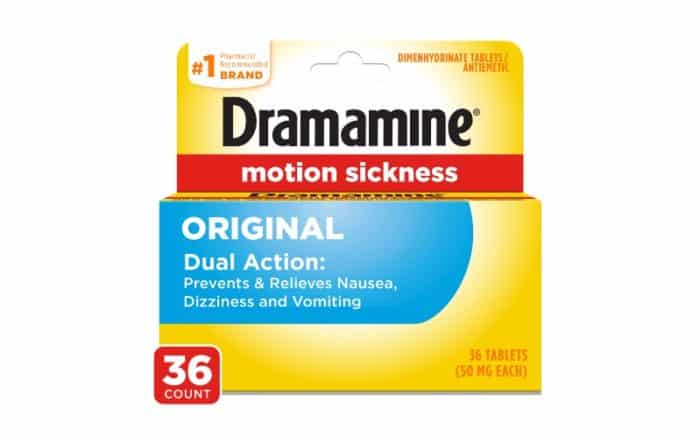How to Prevent Seasickness
Seasickness can affect almost anyone. It’s a kind of motion sickness. You can get the same feeling driving in a car or flying on a plane. Seasickness is often worse, however, due to the unique motion of a boat. Some say you don’t need anything other than your sea legs to overcome it, but that’s not always true.
It’s estimated that about 1 in 3 people will experience motion sickness. With numbers that high, knowing some tips for dealing with it can be invaluable. If you’re a frequent boater, odds are that you’re either going to experience it or have a passenger who will. It can affect people on anything from a comfortable yacht to an inflatable dinghy. Obviously we can’t provide medical advice. If your sickness is severe, you want to consult a doctor for the best way to treat motion sickness.
What Causes Motion Sickness?
You feel seasickness most profoundly in your stomach. Ironically, the root of seasickness is in your head. Motion sickness is caused most prominently by the structures of your inner ear. These are the ones that are responsible for balance. These tiny structures are what help us determine when we are standing upright. They can detect changes in balance, like a boat moving under our feet, to help us maintain balance. Without these structures, even walking would be difficult. That’s because moving our legs would throw us off balance.
The structure in our ear senses continual shifts in movement beneath our feet. When that happens, it can lead to nausea. But the inner ear is not the only cause of these feelings. It’s actually a mix of sense-gathering across our whole bodies. If you try to look directly out a car window as you drive by trees, the fast movement can start to make you feel queasy. Sometimes even fast-paced video games will cause people to experience motion sickness. It’s all basically the same mechanism. How your brain processes the quickly moving visual data can lead to seasickness. It’s part of what’s called the vestibular system. That’s why on rough seas if you’re watching the ocean bob up and down over bow you can start to feel worse.
Even your muscles and joints help continue to the overall sense of sickness caused by being on the water. Your body feels at rest. Your brain knows you are standing still and upright. But the rest of the sense data your body is experiencing tells it that you are moving. Sometimes, processing this conflicting data leads to feelings of sickness and headaches.
In addition, there seems to be a genetic root for some degree of motion sickness. Some people are just predisposed to feeling this way. At least more so than others. More research is needed to fully understand it all. Whatever the case, it can ruin your fun on a jet ski so you want to avoid it.
Who is Most Likely to Get Seasick?
Statistically speaking, motion sickness is more likely to affect women and children. However, there’s no real test to determine who will be susceptible. Likewise it can affect people sometimes but not other times.
Women who are pregnant or menstruating are even more likely to feel seasickness. Taking certain kinds of birth control can also lead to feelings of seasickness. Also, if you are prone to migraine headaches or certain balance disorders, you may feel it more. Sufferers of Parkinson’s Disease, for instance, may feel worse motion sickness. There are studies that have shown people in certain ethnic groups may feel more seasick. This includes Europeans and Asians.
All that said, it is very dependent on the individual. Also, there are few people who could be considered fully “immune” to seasickness. The more intense the motion or stimuli is, the more likely you are to experience seasickness.
Symptoms of Severe Motion Sickness
If you’re suffering from motion sickness there are a few common symptoms ranging from mild to severe.
- Nausea
- Vomiting
- Sweating
- Headaches
- Dizziness
- Irritability
- Fatigue
- Rapid breathing
- Difficulty concentrating
- Increased saliva production
- Drowsiness
Seasickness usually affects victims in a progressive way. You’ll start out feeling queasy and with a headache. This will lead to things like dizziness and increased saliva production. Finally, the nausea sets in and then finally things like rapid breathing and vomiting. The sooner you can get a handle on it the better. The good news is that you can avoid seasickness and reduce nausea.
Tips to Prevent Motion Sickness
It is typically best to try to prevent motion sickness instead of treating it after it happens. With that in mind, there are a few tips and tricks to help you feel your best on the high seas. Not every seasickness remedy will work for every person, so try a few if need be.
- Dimenhydrinate: This is also known as Dramamine or Gravol. It’s an antihistamine drug available over the counter. It has been used for years to combat nausea and, in particular, the effects of motion sickness. Taking a pill about 30 minutes before getting on the water may help prevent those sick feelings. It is known to cause drowsiness.
- Antihistamines: Other antihistamines may work to prevent feelings of motion sickness as well. This comes with one caveat. Only antihistamines that cause drowsiness work. If you buy a non-drowsy formula, it will have no effect.
- Scopolamine: This medication comes in transdermal patch form that you stick to your skin. You are meant to apply it behind your ear a few hours before going on your trip. It will last for three days and then you can apply another if needed. You can also get it as a pill. This is only intended for adults, however, and does have some mild side effects like dry mouth. You’ll need to see a doctor to provide a first dose. Medications like this are prescription only.
- Watch your food: If you’re not interested in medication there are other steps you can take. First and foremost, be aware of what you’re eating. Try not to eat or drink too soon before heading out on the water. Also limit things like excessive alcohol, heavy, fatty foods, or spicy food. Try eating crackers before you feel sick to keep your stomach calm.
- Stay below decks: Try to keep yourself in the most balanced part of the boat. If possible, take a seat below deck in the center of the boat where movement will be the least noticeable.
- Don’t read: Your eyes play a crucial role in keeping your body feeling balanced. When you read on a boat, tracking the words on the page can make those feelings of nausea worse.
- Avoid seasick passengers: If you’re on a cruise ship or large pontoon boat, try to stay away from those who are already sick. Seeing or hearing others being sick won’t help you.
- Avoid windows: If the motion is really making you feel ill, stay below deck and don’t look out windows. The more you can see moving, the worse you will feel.
- Eyes front: When travelling, if you are not facing in the direction you’re moving it makes you feel worse. The human body is designed to move forward and some of us respond poorly to backwards motion. Face the direction the boat is travelling to help limit sea sickness. Try the front seat as well.
- Focus: If you can’t go below deck, keep your eyes focused on something stable. The distant horizon or dry land is a good focal point because even on the roughest seas it’s going to look stable and even. This will help your brain process that conflicting information. That confusing sense data that can lead to seasickness more easily, after all. That in turn will help settle your stomach.
- Grab the wheel: This is a strange solution but it does help sometimes. If you are able and allowed to do so, try taking control of the boat. Being able to control the motion of the vessel yourself can help. That’s because your brain can process the confusing signals you experience. For some, this makes the feeling dissipate.
- Switch things up: Everyone experienced seasickness differently. For that reason, you may want to try positioning yourself differently. Stand up for a while and see how you feel. If that doesn’t work, try to lie down. Sitting is best for some. Usually there will be at least one position that makes you feel better.
- Try ginger ale: Ginger is one of the best natural remedies. Ginger ale has been a remedy for feelings of nausea and vomiting for years. Try sipping a little to see how you feel. Some people prefer it still carbonated and others prefer it flat. Ginger pills or even pieces of raw ginger may help. Just be aware that raw ginger has a real bite to it
- Pressure points: There are wristbands you can buy that work by way of pressure points. There is an acupressure point beneath your wrist called the P6 point. If you use your index, middle and ring finger from your right hand, you can find it on your left wrist. Move your fingers below the crease in your wrist. It will be below the left index finger between the tendons. Apply firm pressure for 5-10 seconds.
- Chamomile tea: Like ginger, chamomile is able to soothe and relax your stomach. If you like the taste, give it a try.
- Be aware of smells: Some odors will make seasickness work, some may help. Peppermint oil has been known to have a calming effect.
- Vitamin B-6: During pregnancy, some women are prescribed vitamin B-6 (pyridoxine) to prevent nausea. This is definitely a preventative measure, and you’d need to take it for at least a few days before boating.
- Stay hydrated: Drinking water is important if you are sick. Dehydration makes all your symptoms of seasickness worse. On the high seas, you don’t want to suffer motion sickness plus dehydration.
Can Fresh Air Help?
One of the best tips for combating seasickness is more simple than you might think – fresh air. But how can fresh air help if you’re already out on the sea? This needs to be combined with some other tips, like ginger ale.
If you feel yourself getting seasick keep a hatch or vent open. If you can sit where you can feel a breeze on your face, that can really help. If below decks isn’t an option, then try the trick about focusing on the horizon. As you watch a stationary point, focus on your breathing as well. Be conscious of yourself breathing in and out. Take deep breaths and try to only focus on breathing and watching that fixed point. Allow yourself to relax and try to maintain a calm heart rate.
It’s good to have a fan with you when you travel, just in case. A small electric or battery operated fan is great. You can feel like you have a breeze no matter where you are.
The Bottom Line
Anyone could be susceptible to seasickness. What triggers nausea in one person will not in another. You can be an experienced crew member out on the Atlantic ocean or just a first time sailor. Keep our seasickness remedies in mind and be prepared for your next cruise or outing on the water. If you plan ahead, drink plenty of water and keep those saltine crackers handy, you should pull through.
Categories: nauticalknowhow














